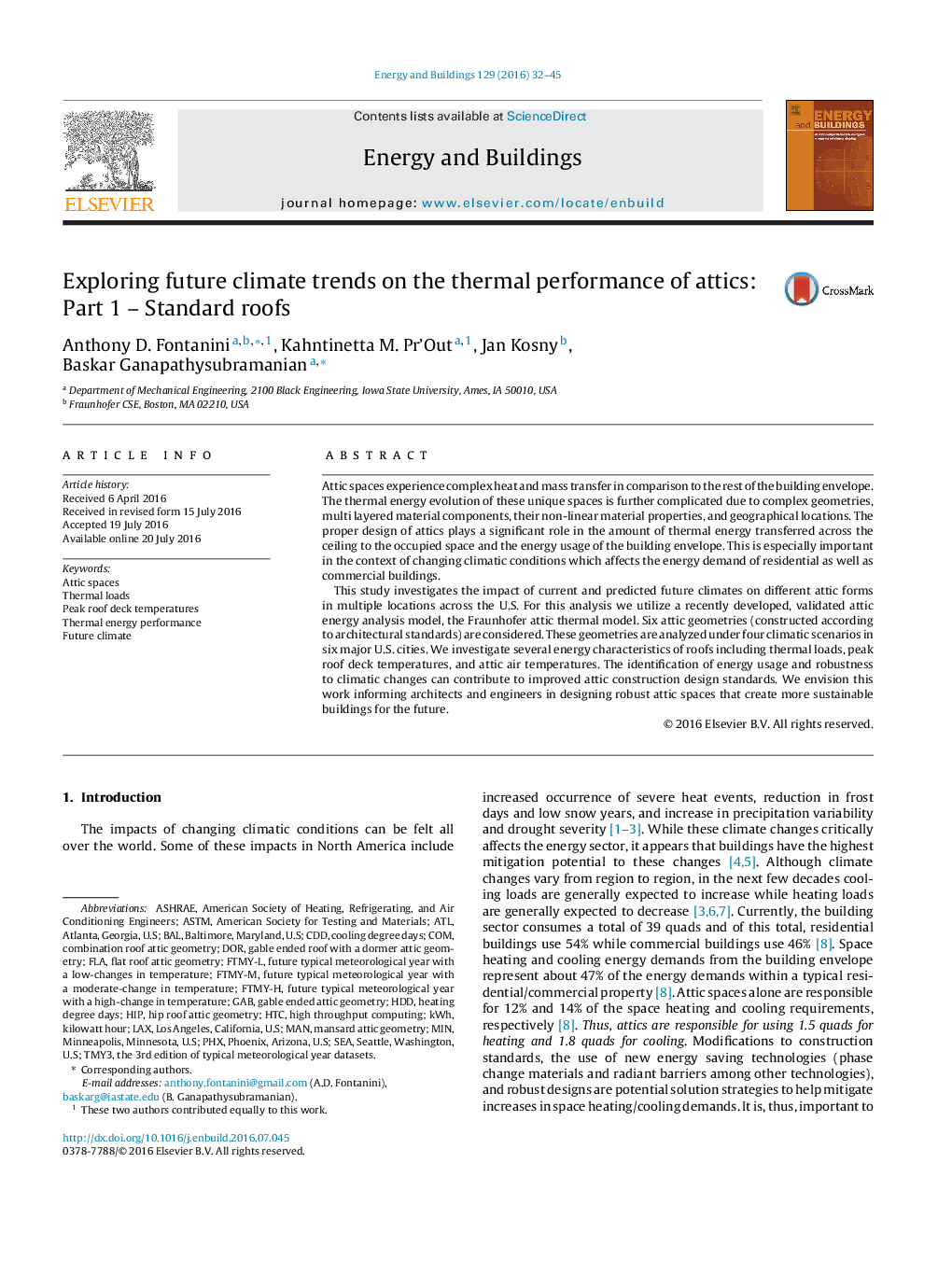| Article ID | Journal | Published Year | Pages | File Type |
|---|---|---|---|---|
| 261908 | Energy and Buildings | 2016 | 14 Pages |
•Analysis is performed of implications of future climate trends on residential attic spaces.•Changes in the U-values for attic floors are quantified based on climate change.•Relative changes in cooling, heating, and overall thermal loads are calculated for future climate scenarios.•Distributions for the time of day of peak heating and cooling loads and daily peak roof deck temperatures are investigated.
Attic spaces experience complex heat and mass transfer in comparison to the rest of the building envelope. The thermal energy evolution of these unique spaces is further complicated due to complex geometries, multi layered material components, their non-linear material properties, and geographical locations. The proper design of attics plays a significant role in the amount of thermal energy transferred across the ceiling to the occupied space and the energy usage of the building envelope. This is especially important in the context of changing climatic conditions which affects the energy demand of residential as well as commercial buildings.This study investigates the impact of current and predicted future climates on different attic forms in multiple locations across the U.S. For this analysis we utilize a recently developed, validated attic energy analysis model, the Fraunhofer attic thermal model. Six attic geometries (constructed according to architectural standards) are considered. These geometries are analyzed under four climatic scenarios in six major U.S. cities. We investigate several energy characteristics of roofs including thermal loads, peak roof deck temperatures, and attic air temperatures. The identification of energy usage and robustness to climatic changes can contribute to improved attic construction design standards. We envision this work informing architects and engineers in designing robust attic spaces that create more sustainable buildings for the future.
